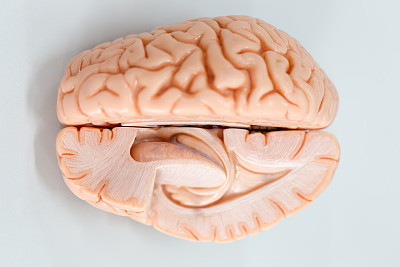Postoperative Complications of Brain Tumors
Introduction
Craniotomy for brain tumor resection is a major neurosurgical procedure associated with a significant risk of complications, most of which manifest within the first seven days postoperatively. Prompt recognition and management of these issues are critical to optimizing patient outcomes. This guide outlines the pathophysiology, clinical presentation, and essential nursing interventions for the most common complications following brain tumor surgery.
1. Increased Intracranial Pressure (ICP)
Pathophysiology
Elevated ICP is a common and life-threatening complication resulting from:
– Cerebral Edema: Swelling of brain tissue due to surgical trauma and traction, typically peaking 36-72 hours after surgery.
– Intracranial Hematoma: A postoperative bleed, which causes a more rapid and earlier rise in ICP compared to edema.
Clinical Monitoring & Interventions
- Neurological Assessment: Conduct frequent and rigorous monitoring of vital signs, level of consciousness (using the Glasgow Coma Scale), pupillary size and reactivity, and motor function.
- ICP Monitoring: If an ICP monitor is in place, observe waveforms and pressure readings closely.
- Pharmacological Management: Administer osmotic agents (e.g., mannitol) and glucocorticoids as prescribed to reduce cerebral edema.
- Positioning: Maintain the head of the bed at 30-45 degrees with the head in a neutral, midline position to promote venous drainage.
2. Intracranial Hematoma
Pathophysiology
Often occurring within the first 3 days post-surgery, intracranial hematomas are typically caused by incomplete hemostasis during the operation. A hematoma as small as 20-30 mL can lead to rapid neurological deterioration and be life-threatening.
Clinical Monitoring & Interventions
- Wound and Drain Assessment: Closely observe the surgical dressing for excessive bleeding. Monitor the color, character, and volume of output from any surgical drains (e.g., Jackson-Pratt, Hemovac) and ensure they remain patent.
- Vigilant Neurological Checks: A sudden decline in consciousness or the emergence of a new focal neurological deficit is a critical sign requiring immediate notification of the surgical team. Early detection is key to timely intervention, which may include returning to the operating room for evacuation.
3. Cerebrospinal Fluid (CSF) Leak
Pathophysiology
A CSF leak occurs when there is a tear in the dura mater that was not fully sealed during closure, allowing CSF to escape.
Clinical Monitoring & Interventions
- Site Inspection: Regularly inspect the surgical incision, as well as the nose (rhinorrhea) and ears (otorrhea), for any clear, watery drainage.
- “Halo” Sign: Test any suspicious drainage on gauze; a positive “halo” or “ring” sign (a clear ring of CSF separating from a central spot of blood) is indicative of a leak. Glucose testing of the fluid can also be confirmatory.
- Infection Prevention: If a leak is suspected or confirmed, notify the physician immediately. Maintain strict asepsis and position the patient as directed (often with head elevation) to reduce CSF pressure and prevent ascending infection (meningitis).
4. Diabetes Insipidus (DI)
Pathophysiology
DI is a common complication following surgery in the suprasellar region (e.g., for pituitary adenomas or craniopharyngiomas). Surgical manipulation of the hypothalamus or pituitary stalk can disrupt the synthesis or release of antidiuretic hormone (ADH or vasopressin).
Clinical Presentation
- Polyuria: Excretion of large volumes of dilute urine (daily output > 4,000 mL).
- Polydipsia: Intense thirst.
- Laboratory Findings:
- Hypernatremia and increased serum osmolality.
- Low urine specific gravity (< 1.005) and decreased urine osmolality.
Clinical Monitoring & Interventions
- Strict Intake and Output: Accurately record all fluid intake and urine output hourly.
- Electrolyte Monitoring: Closely monitor serum sodium and osmolality.
- Hormone Replacement: Administer vasopressin (or its synthetic analog, desmopressin) as prescribed, titrating the dose based on urine output and serum sodium levels.
5. Infection
Pathophysiology
Postoperative infections can be direct (incisional infection, meningitis, brain abscess) or indirect (pneumonia, urinary tract infection).
Clinical Presentation
- Fever: A new or persistent high fever developing 3-4 days post-op, after the initial surgical fever has subsided.
- Neurological Signs: Headache, vomiting, deteriorating consciousness, seizures.
- Meningeal Signs: Nuchal rigidity and other signs of meningeal irritation may be present.
- CSF Analysis: Lumbar puncture will reveal turbid, purulent CSF with a high white blood cell count.
Clinical Monitoring & Interventions
- Aseptic Technique: Maintain strict aseptic technique during all wound care and handling of invasive lines.
- Supportive Care: Ensure adequate nutrition to support the immune system.
- Prophylaxis and Treatment: Administer prophylactic or therapeutic antibiotics as prescribed. Implement excellent basic nursing care, including pulmonary hygiene and catheter care, to prevent indirect infections.







